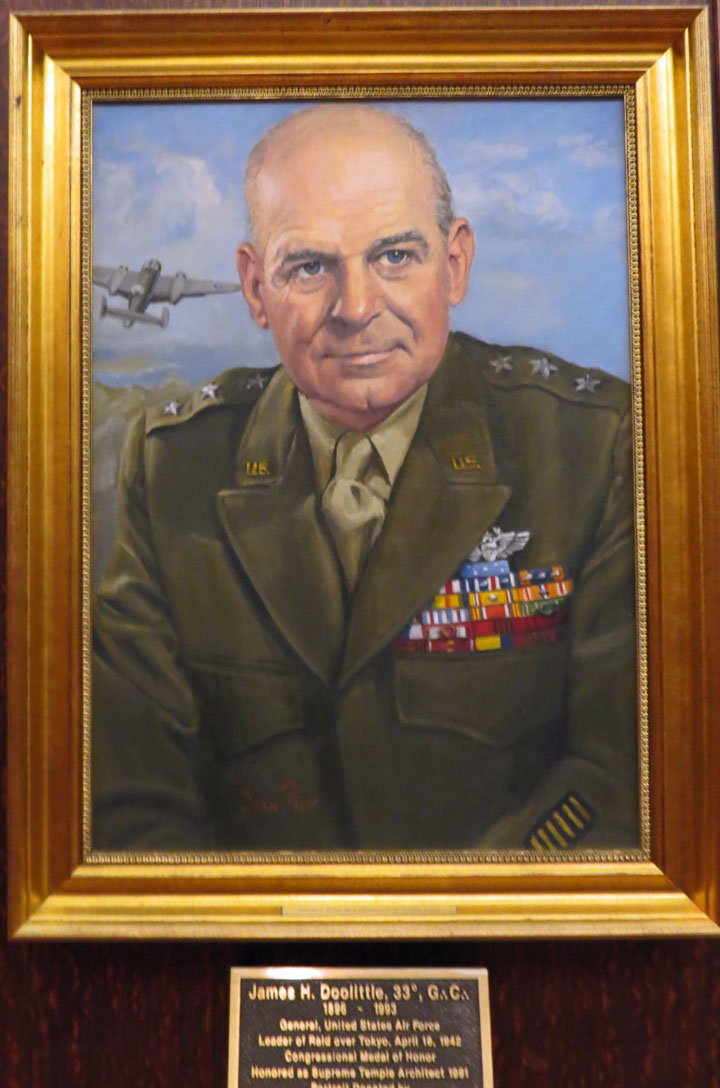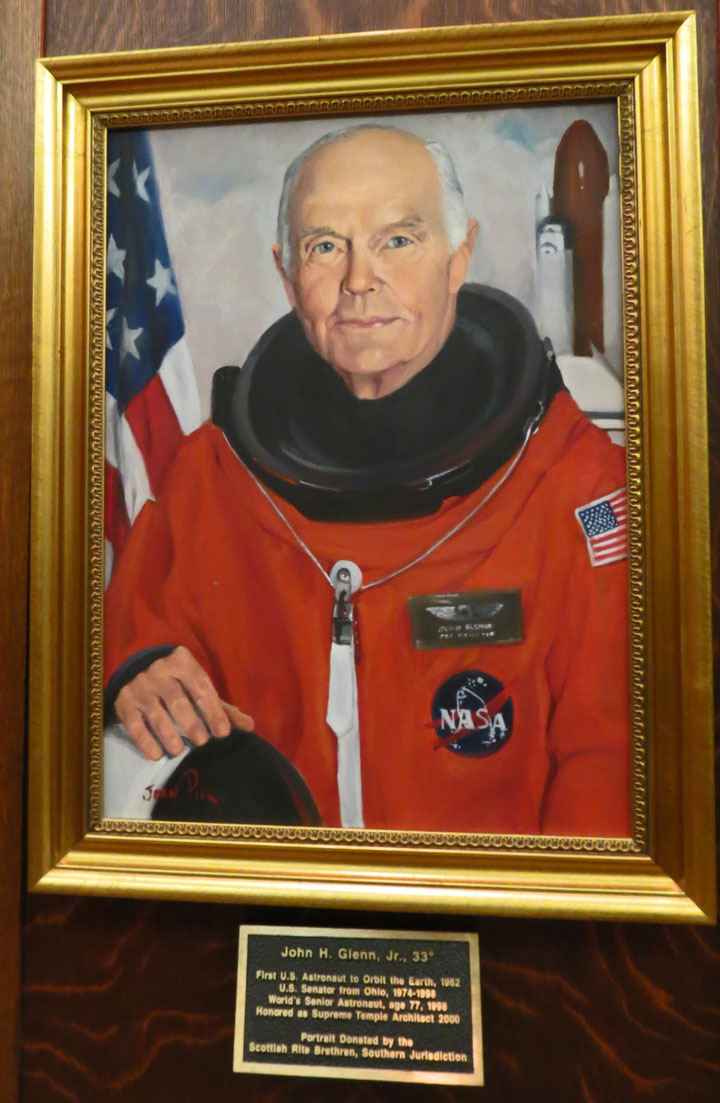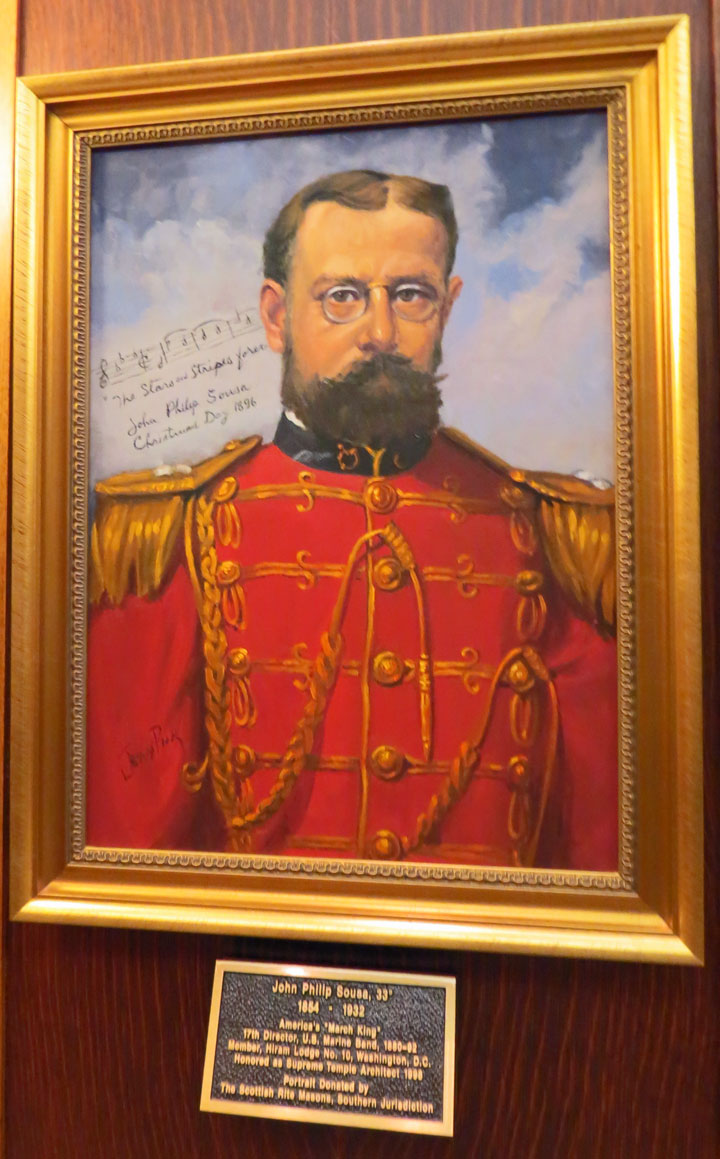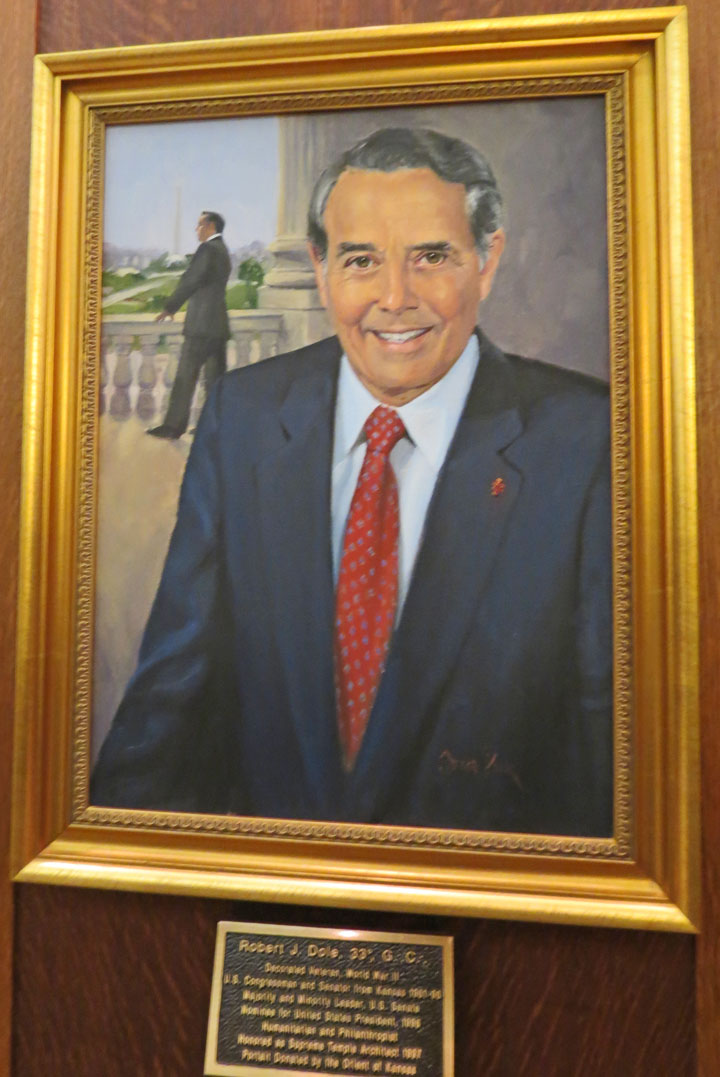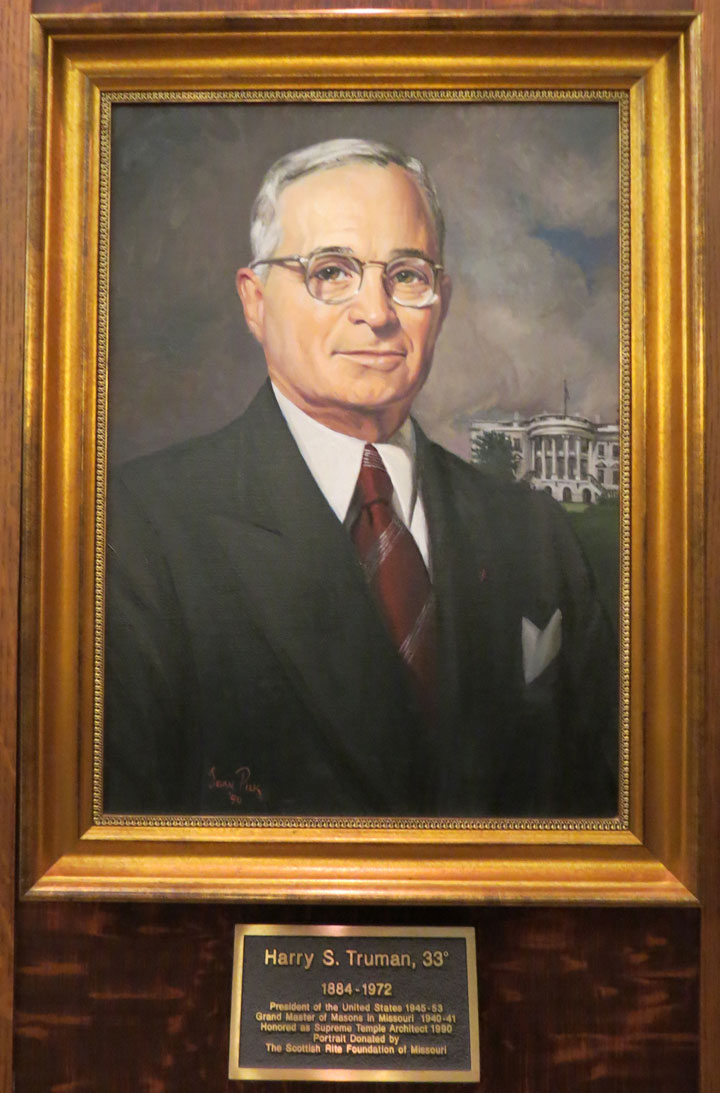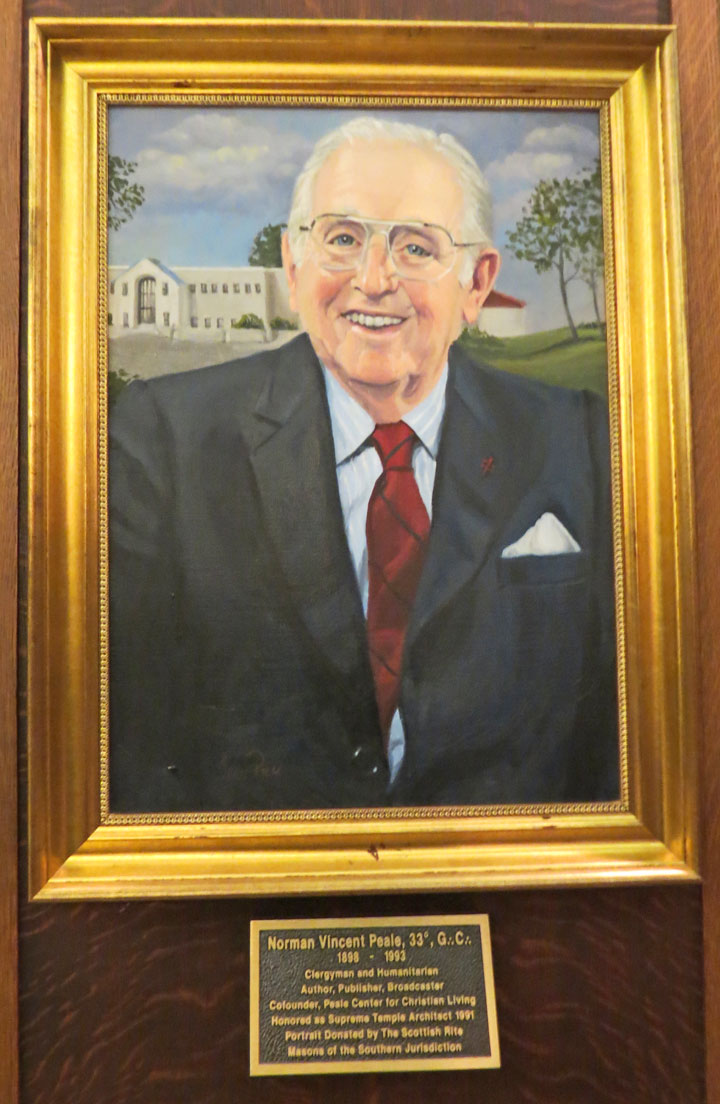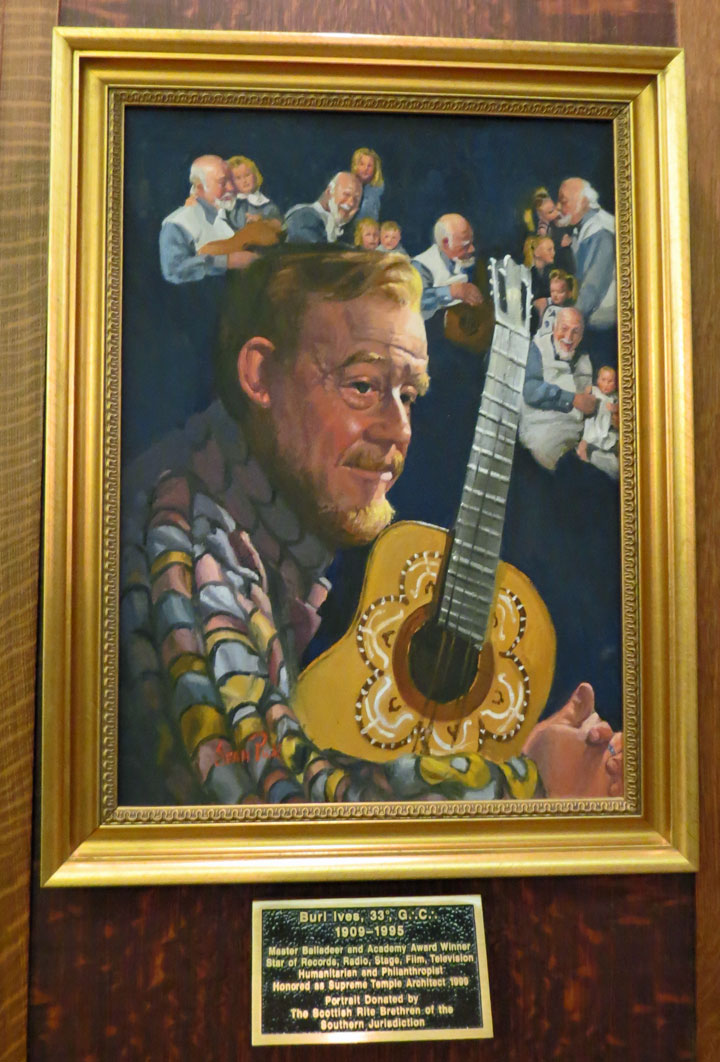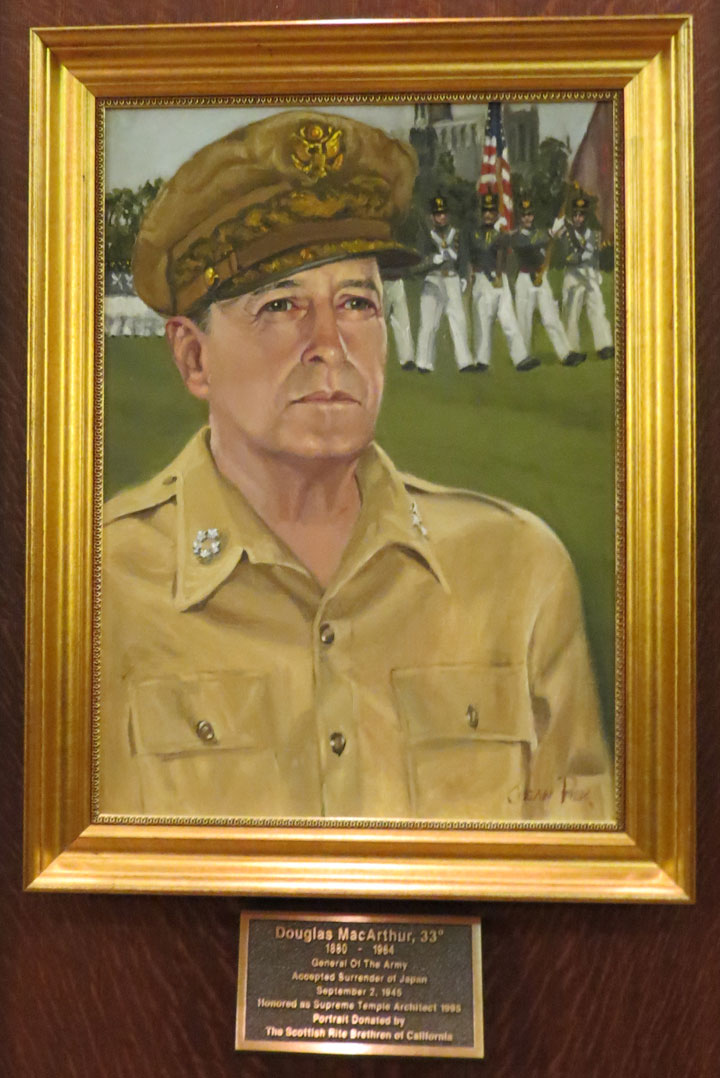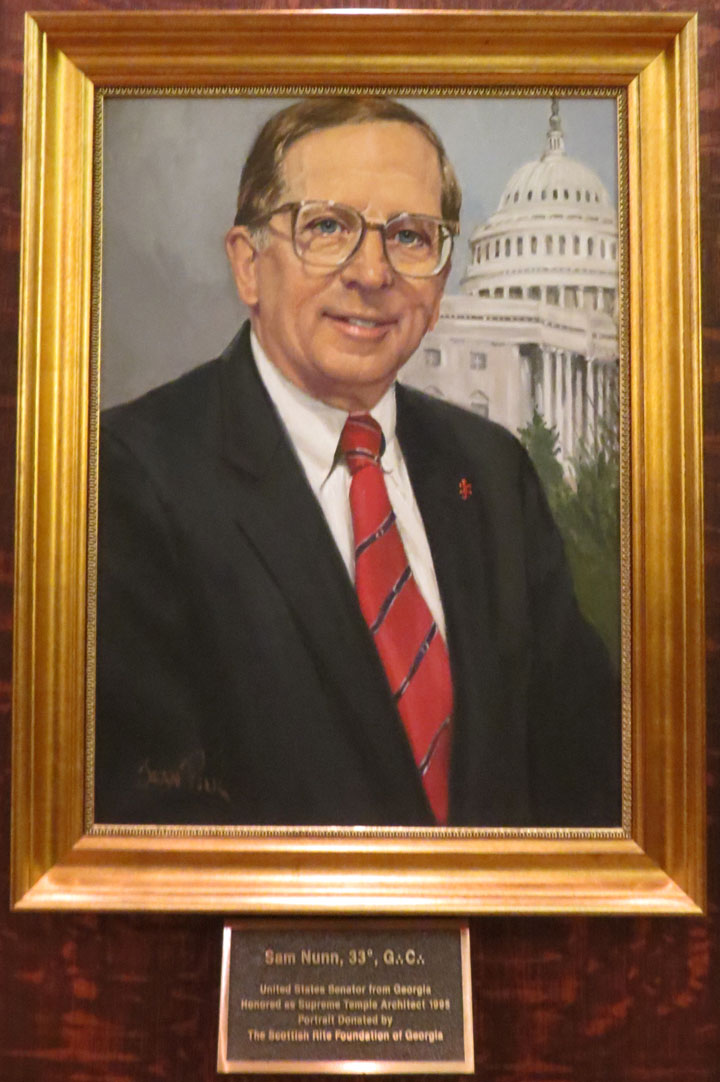

House of the Temple
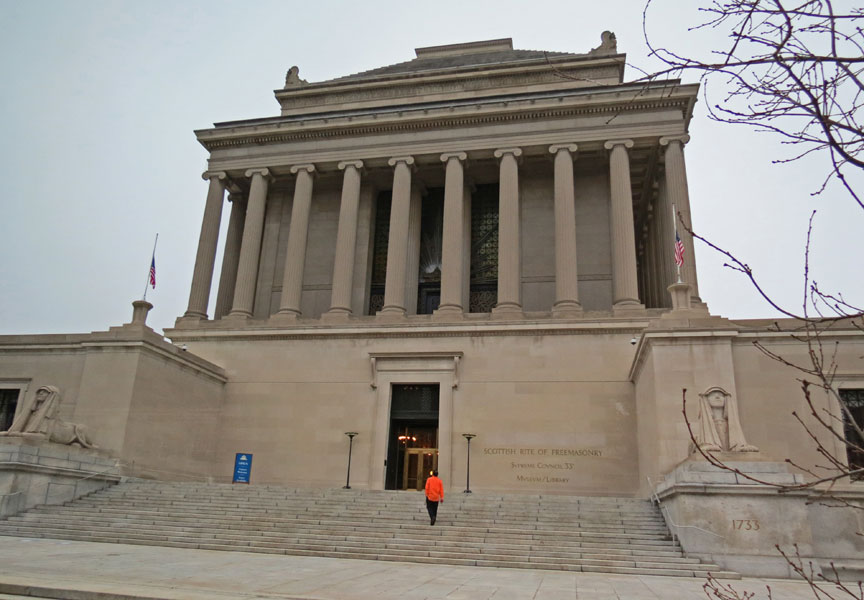
House of the Temple
The House of the Temple is a Masonic temple in Washington, D.C., United States that serves as the headquarters of the Scottish Rite of Freemasonry, Southern Jurisdiction, U.S.A. (officially, "Home of The Supreme Council, 33°, Ancient & Accepted Scottish Rite of Freemasonry, Southern Jurisdiction, Washington D.C., U.S.A.")
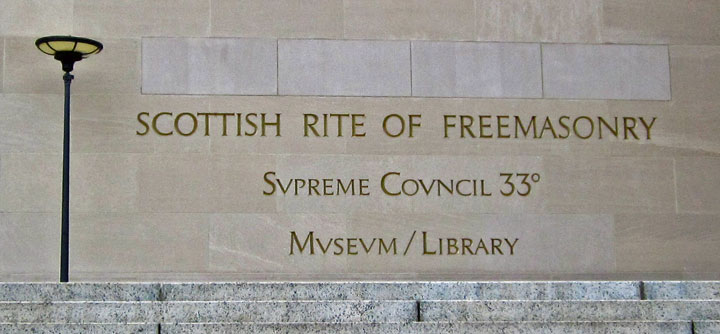
It is located at 1733 16th Street, N.W., in the Dupont Circle neighborhood. The
full name of the Supreme Council is "The Supreme Council (Mother Council of the
World) of the Inspectors General Knights Commander of the House of the Temple of
Solomon of the Thirty-third degree of the Ancient and Accepted Scottish Rite of
Freemasonry of the Southern Jurisdiction of the United States of America."
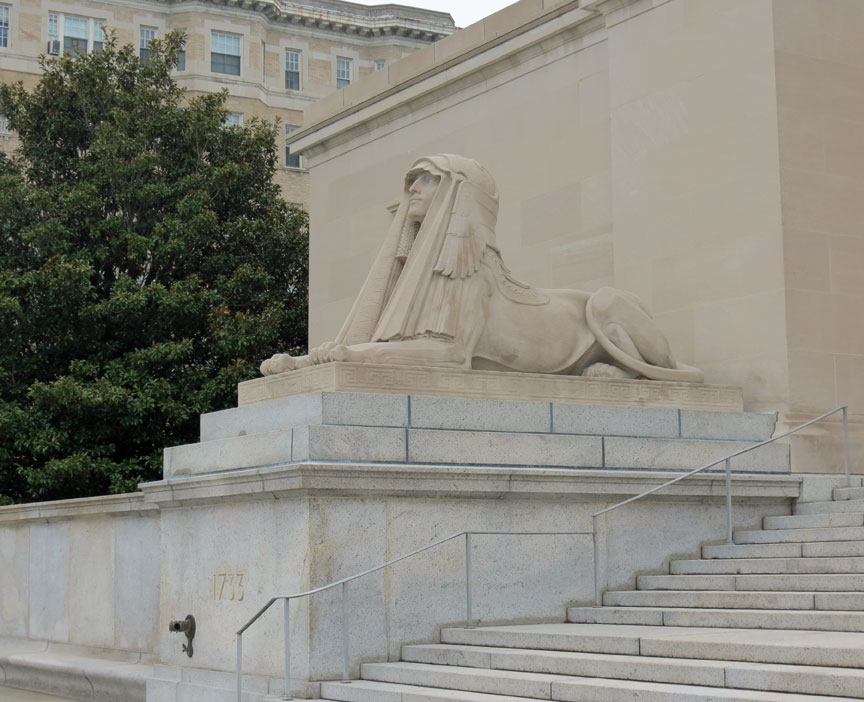
On May 31, 1911, 110 years after the founding of the Supreme Council, Grand
Commander James D. Richardson broke ground on the spot where the House of the
Temple now stands in Washington, D.C. Grand Master J. Claude Keiper, of the
Grand Lodge of the District of Colombia, laid the cornerstone in the northeast
corner on October 18, 1911.

The temple was designed by noted architect John Russell Pope, who modeled it
after the tomb of Mausolus at Halicarnassus, one of the Seven Wonders of the
Ancient World. The building was dedicated four years later on October 18, 1915.
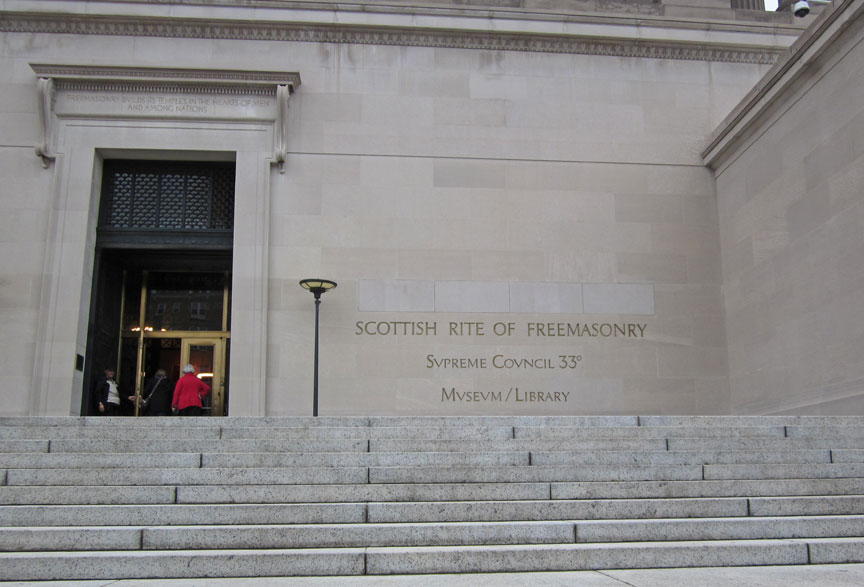
The building's design was widely praised by contemporary architects, and it won
Pope the Gold Medal of the Architectural League of New York in 1917. In his 1920
book L'Architecture aux Etatis-Unis, French architect Jacques Gréber described
it as "a monument of remarkable sumptuousness ... the ensemble is an admirable
study of antique architecture stamped with a powerful dignity."
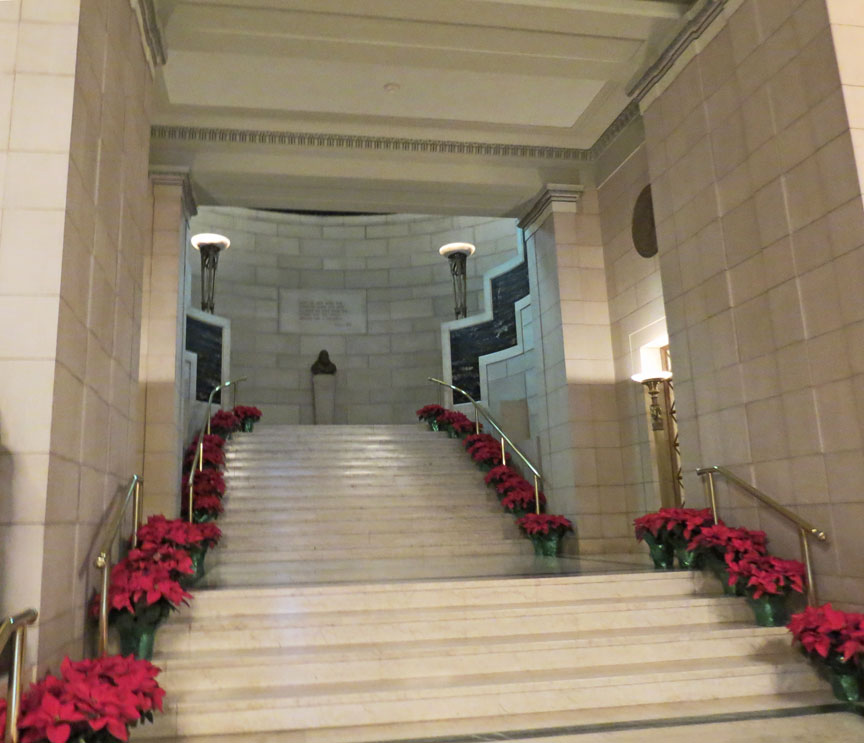
Fiske Kimball's 1928 book American Architecture describes it as "an example of the triumph of classical form in America". In the 1920s, a panel of architects named it "one of the three best public buildings" in the United States, along with the Nebraska State Capitol and the Pan-American Union headquarters building in Washington, D.C. In 1932, it was ranked as one of the ten top buildings in the country in a poll of federal government architects.
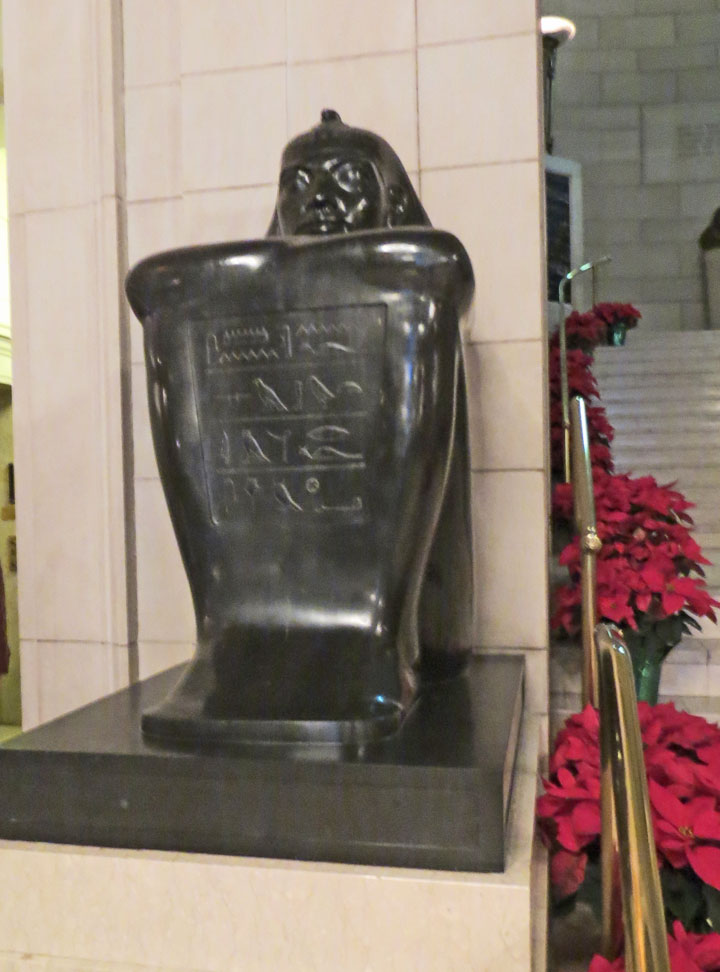
Confederate general and former Sovereign Grand Commander Albert Pike was the author of an 1871 book called Morals and Dogma of the Ancient and Accepted Scottish Rite of Freemasonry, a book that describes in detail the 33 ranks of Freemasonry, the stories and teachings associated with each rank, the rituals connected to each rank, and other lodge proceedings.
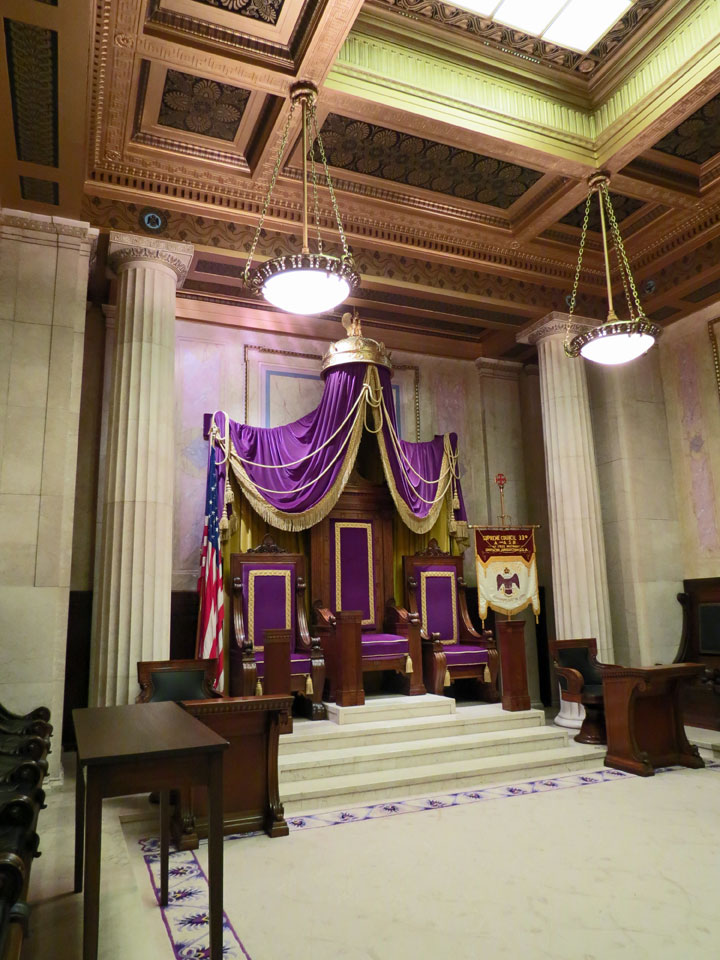
ritual hall
In 1944, the remains of Albert Pike were removed from Oak Hill Cemetery in the Georgetown section of Washington, DC and placed in the House of the Temple. The remains of Past Grand Commander John Henry Cowles were entombed in the temple in 1952, after his 31 year reign as Grand Commander. The Temple also holds one of the largest collections of materials related to Scottish poet and Freemason Robert Burns in its library, the first public library in Washington, D.C
Text from Wikipedia
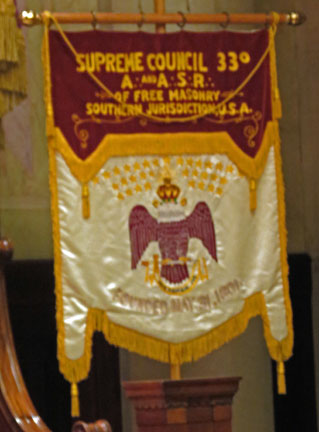
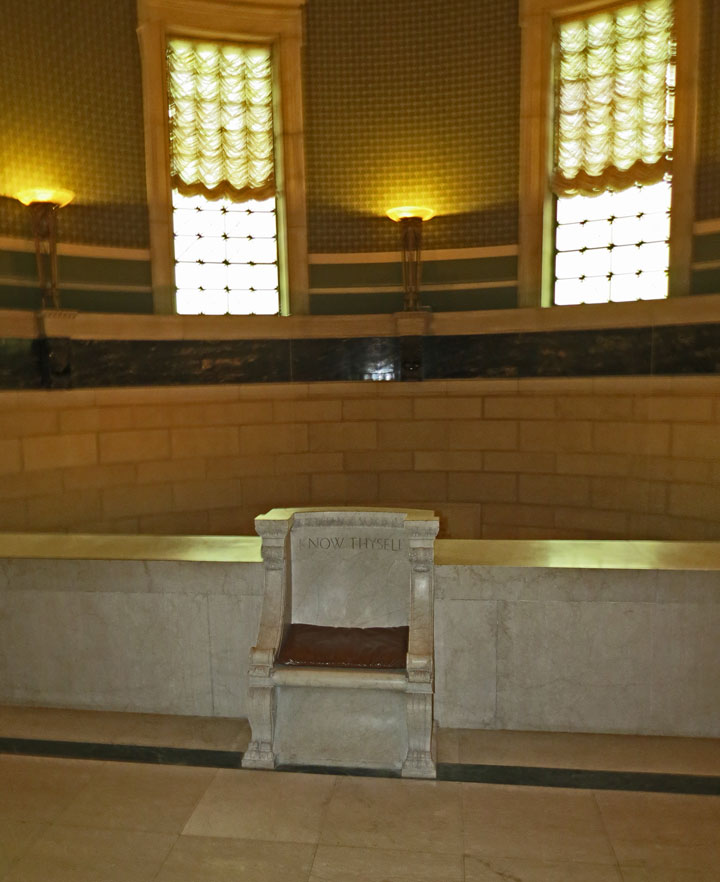
seat for the guard at the secret chamber
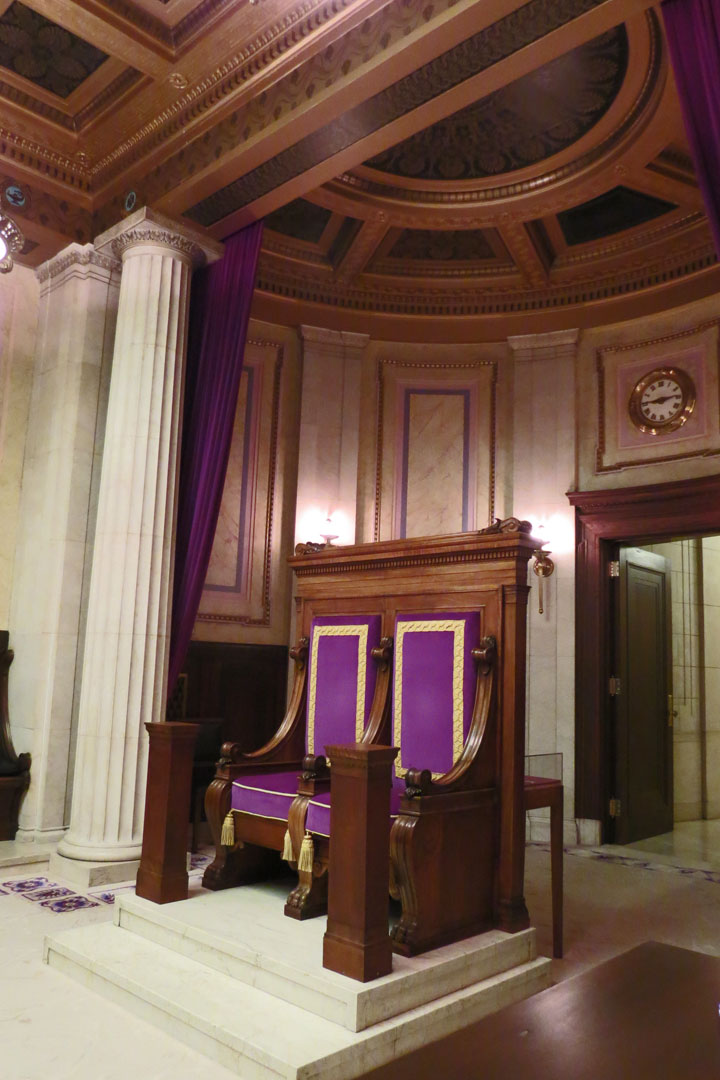
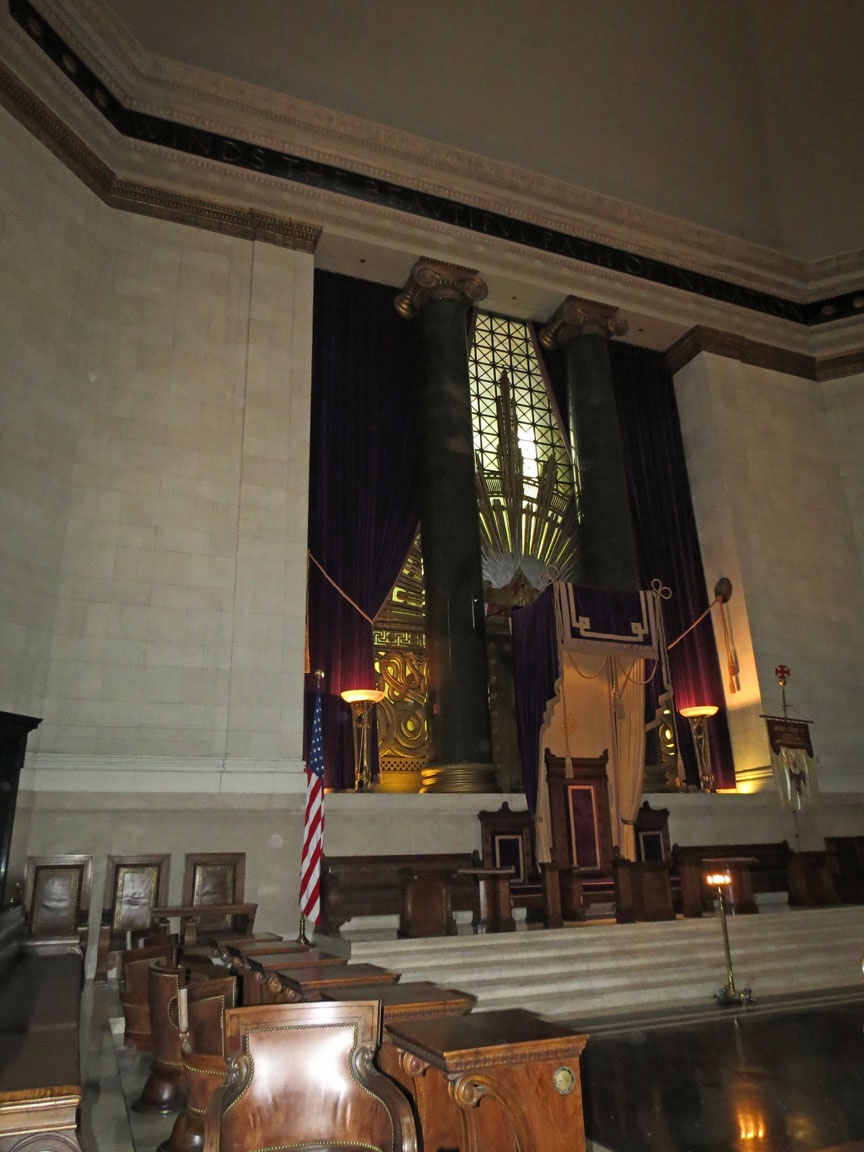


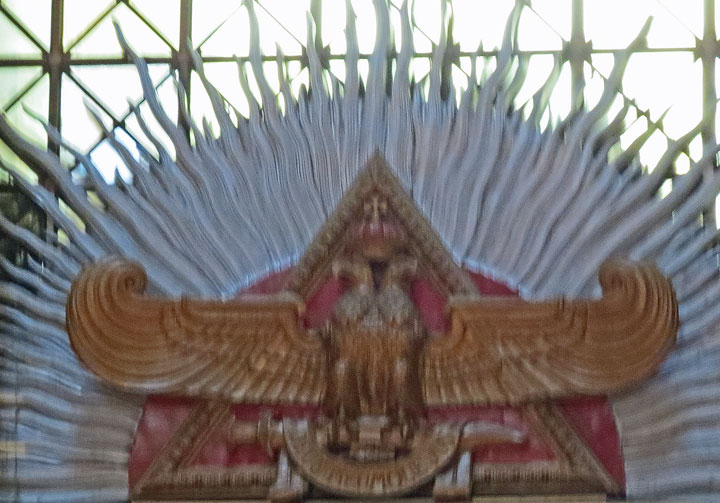
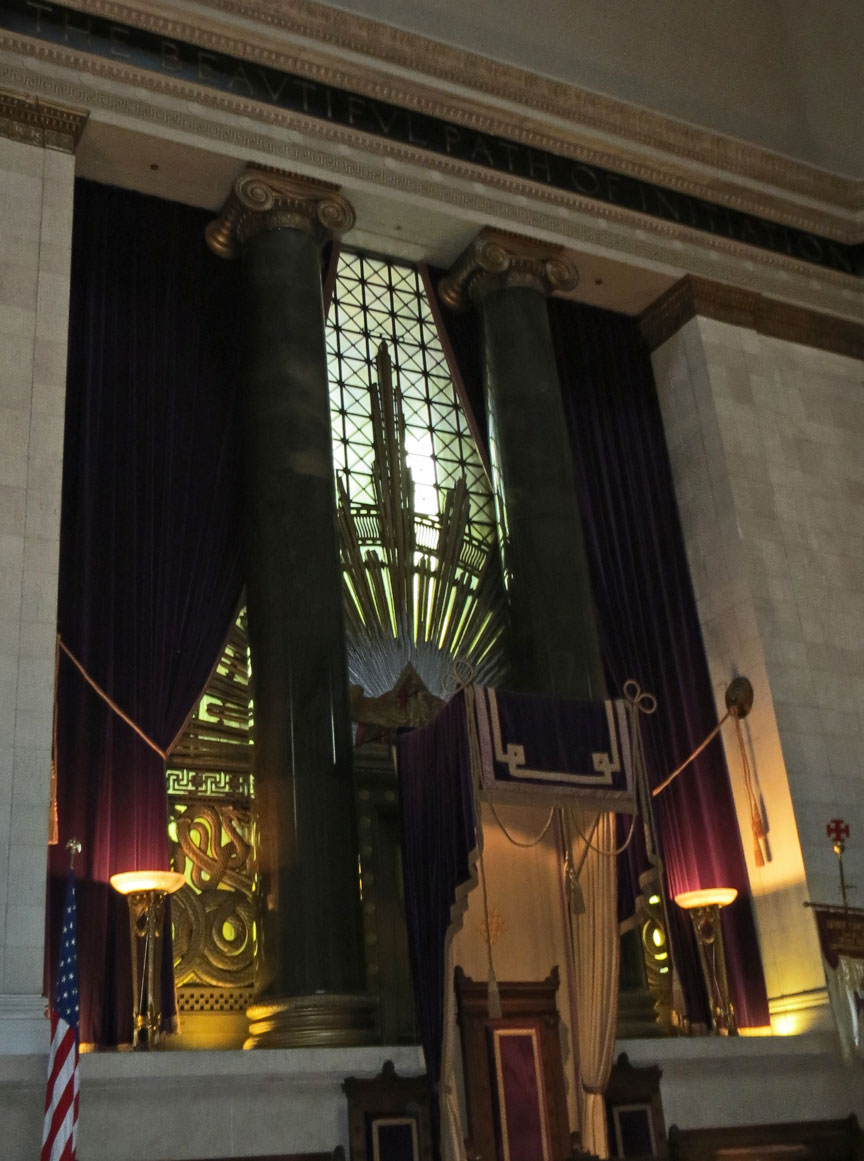
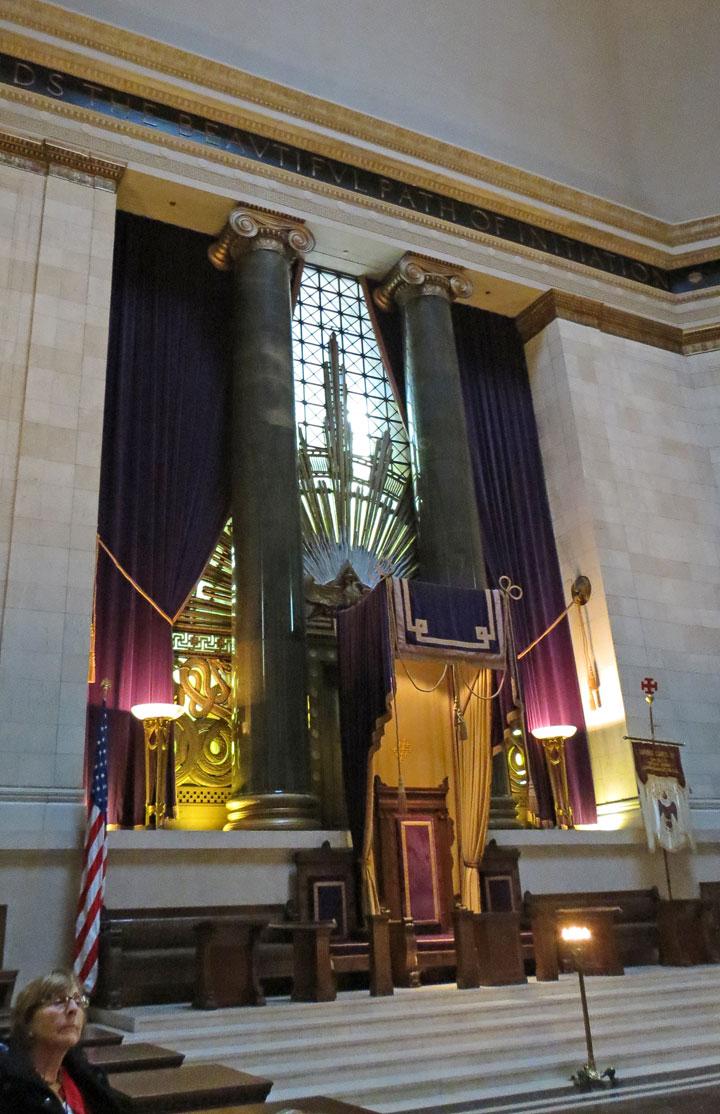
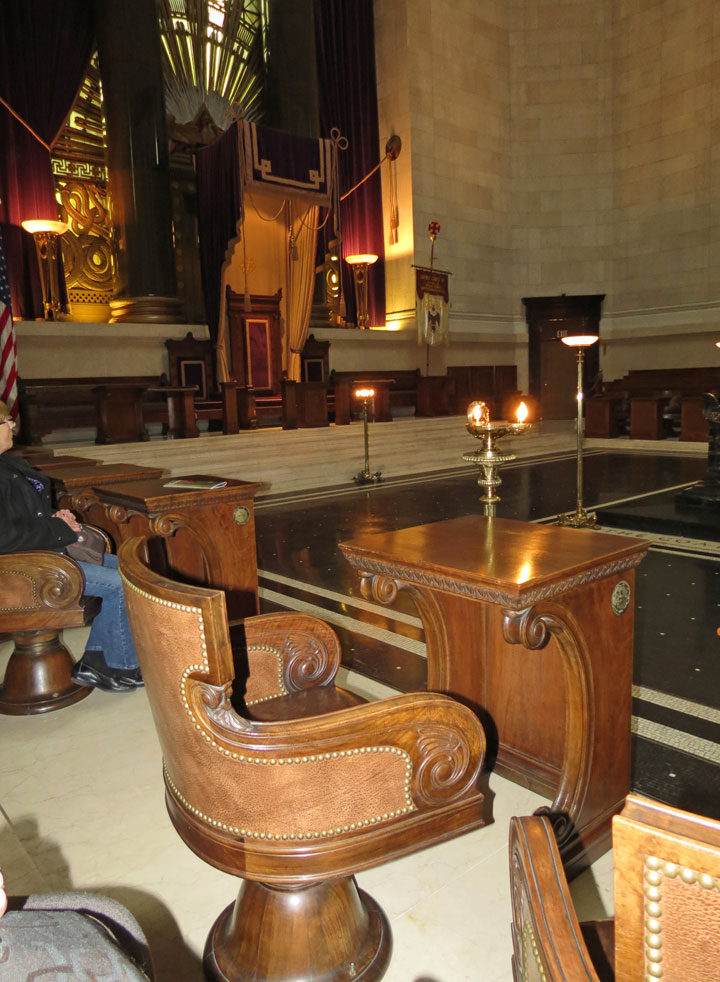
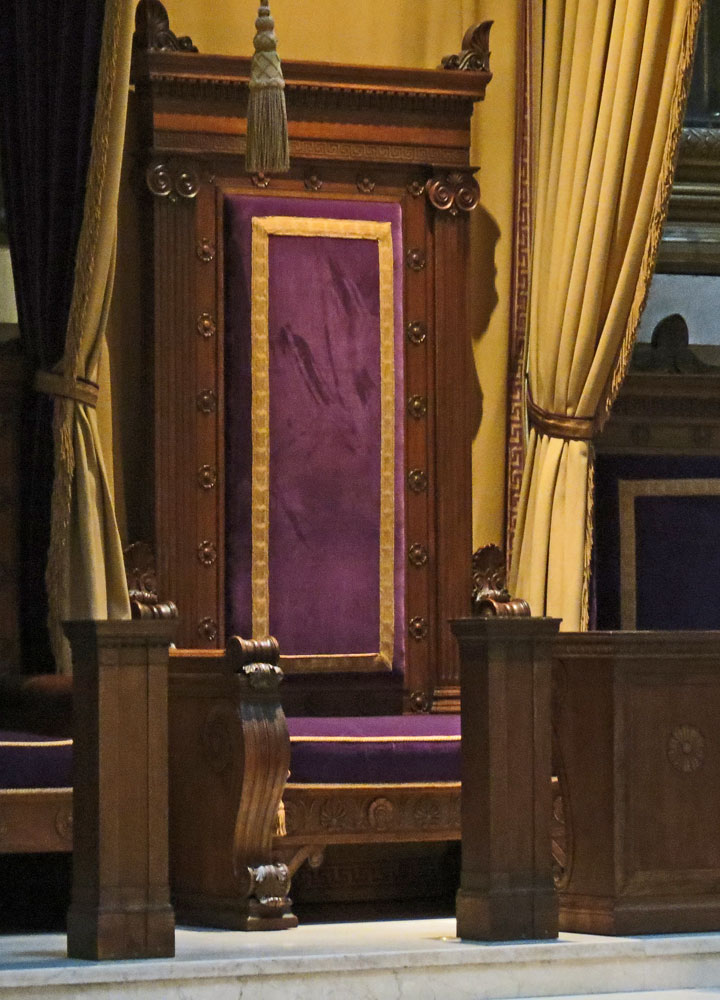
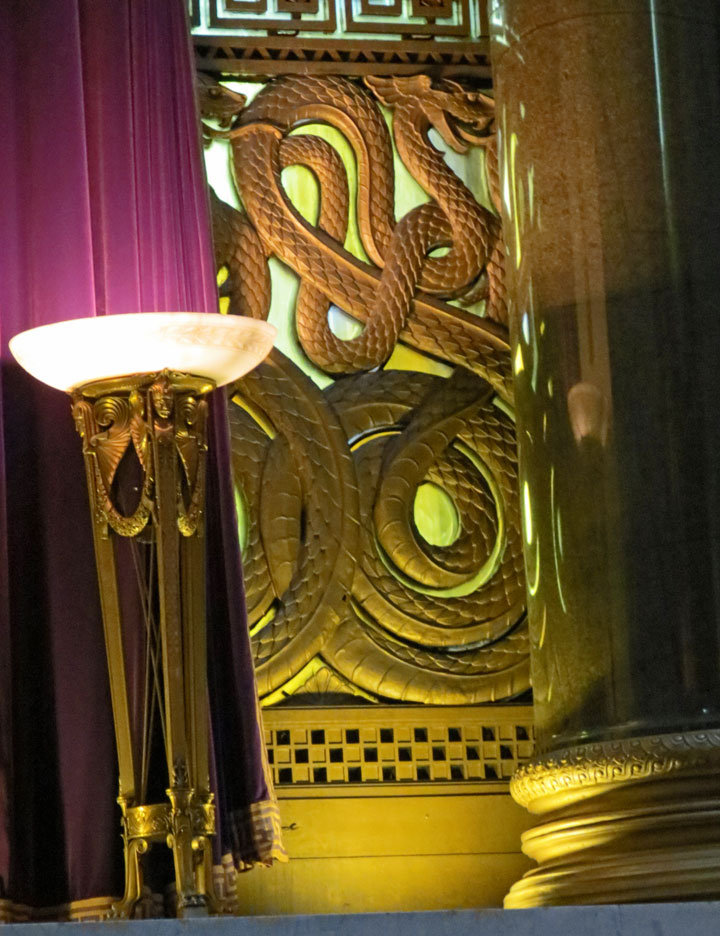
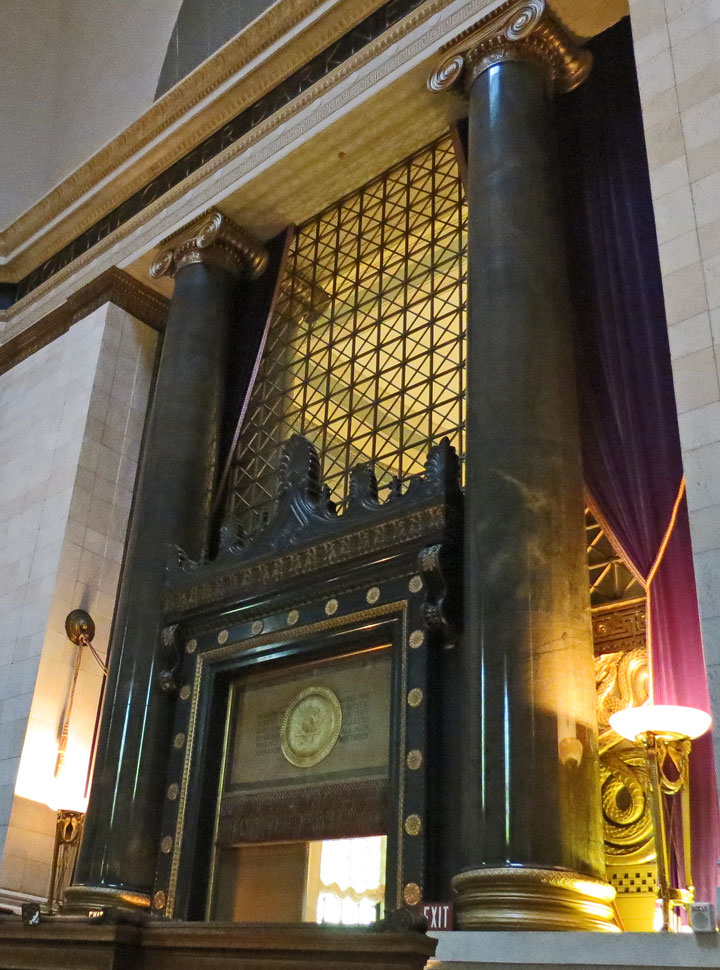
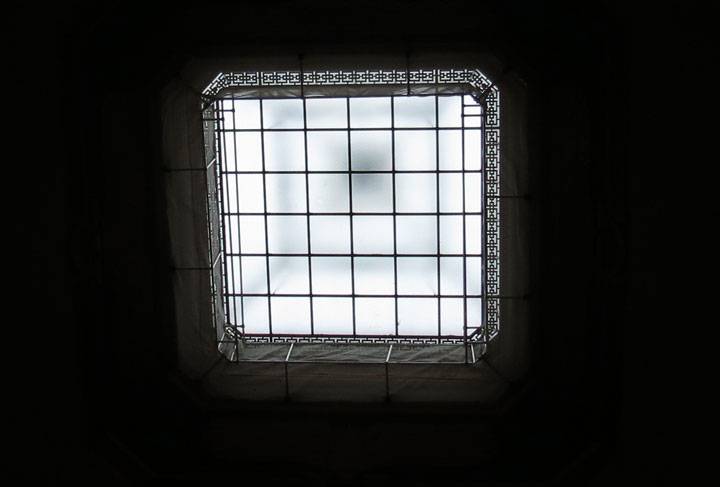
ceiling sky light
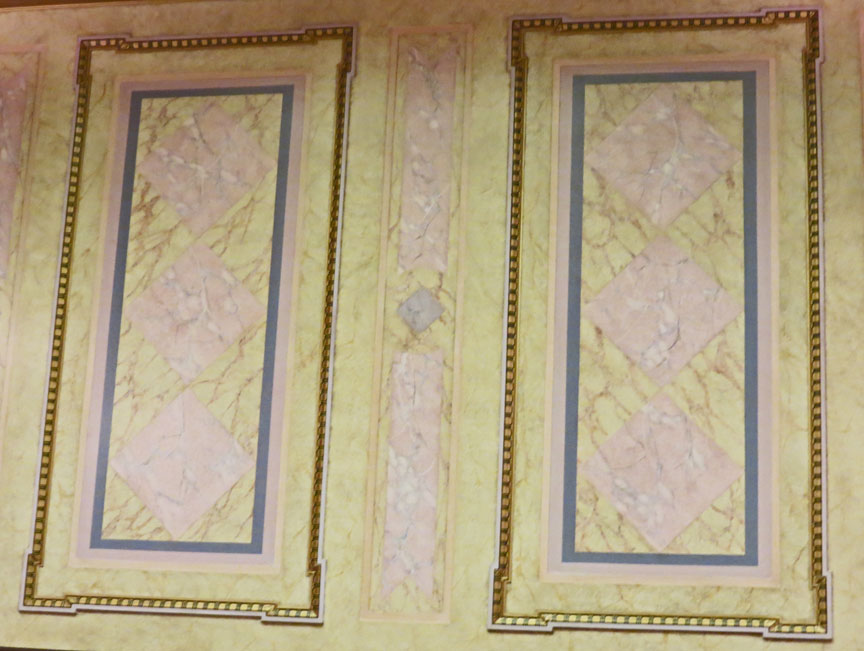
wall decoration
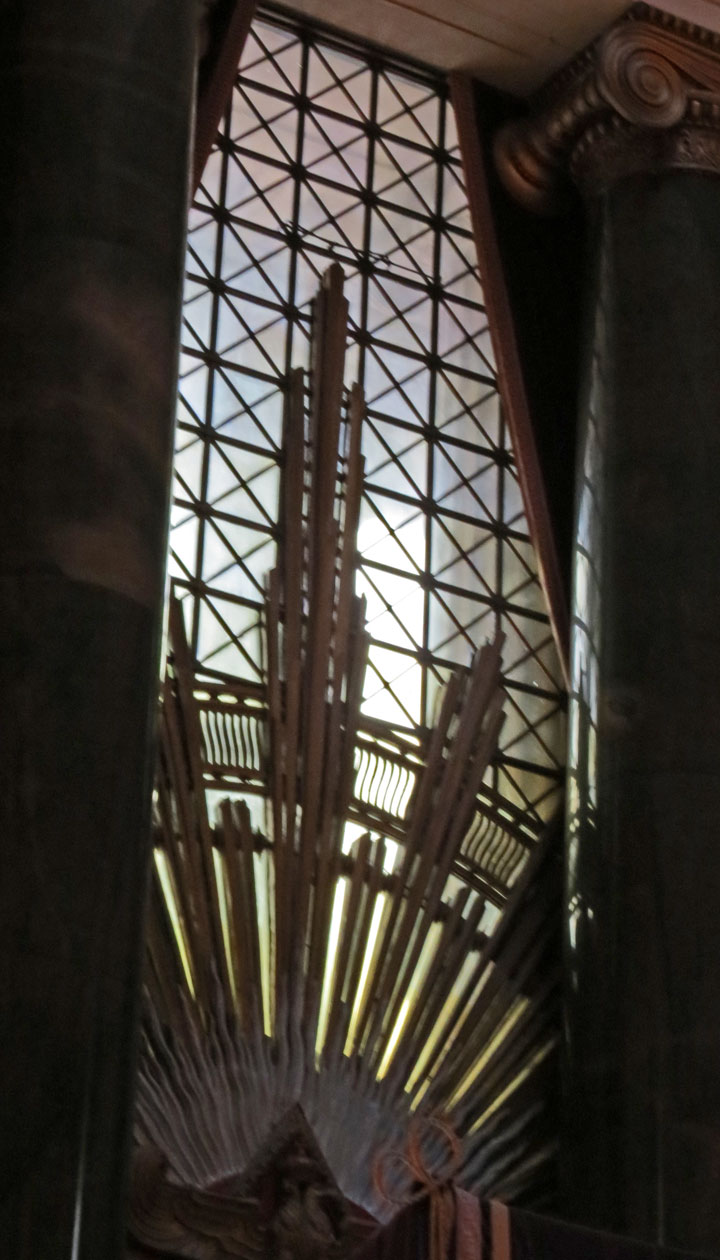
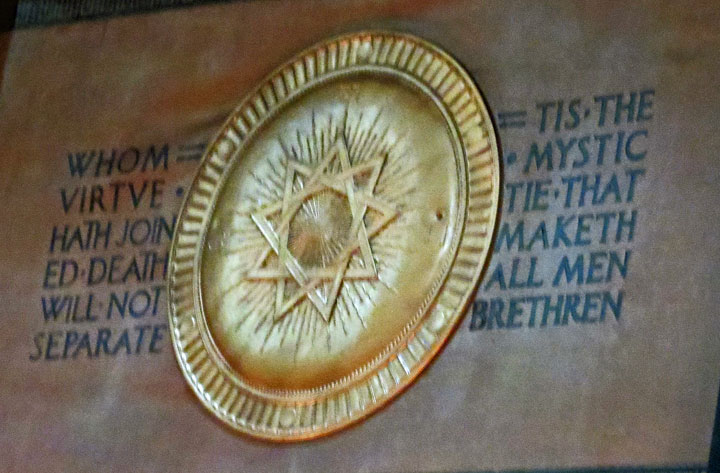
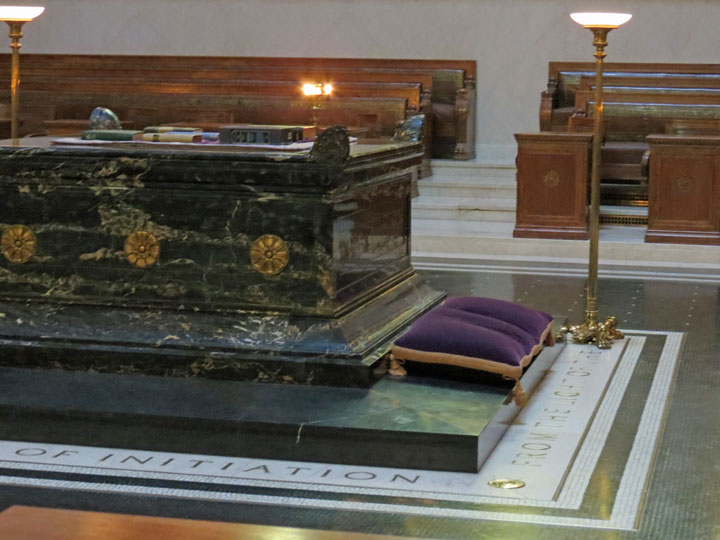
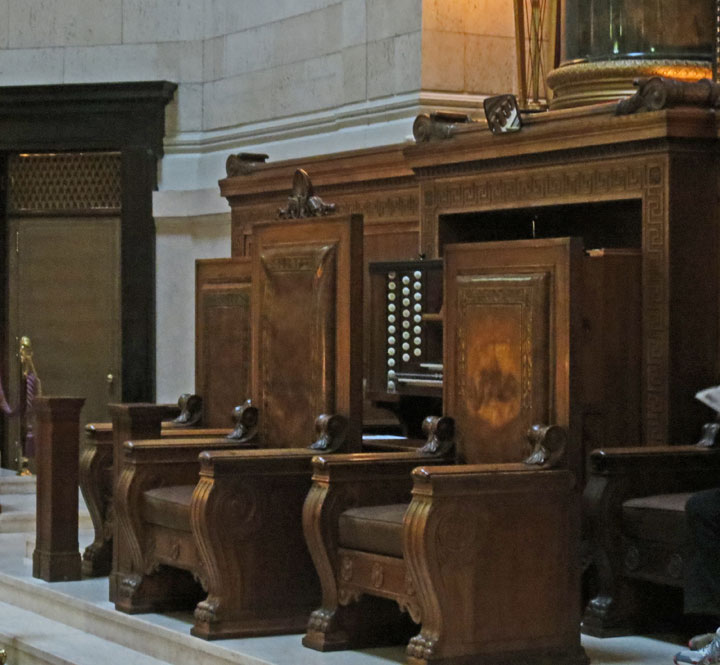
the organ
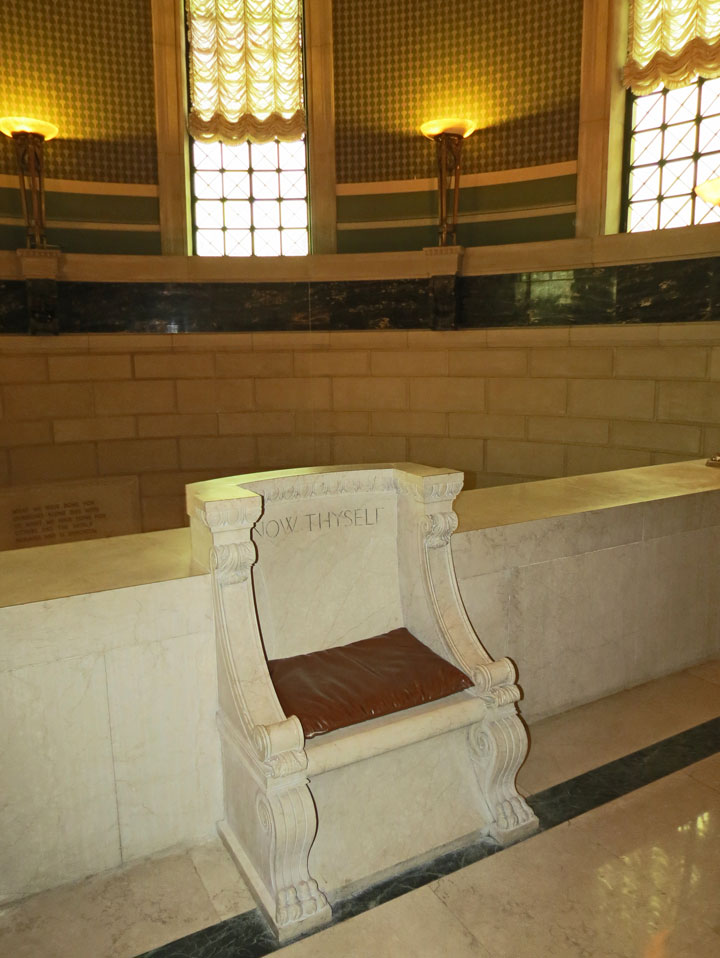
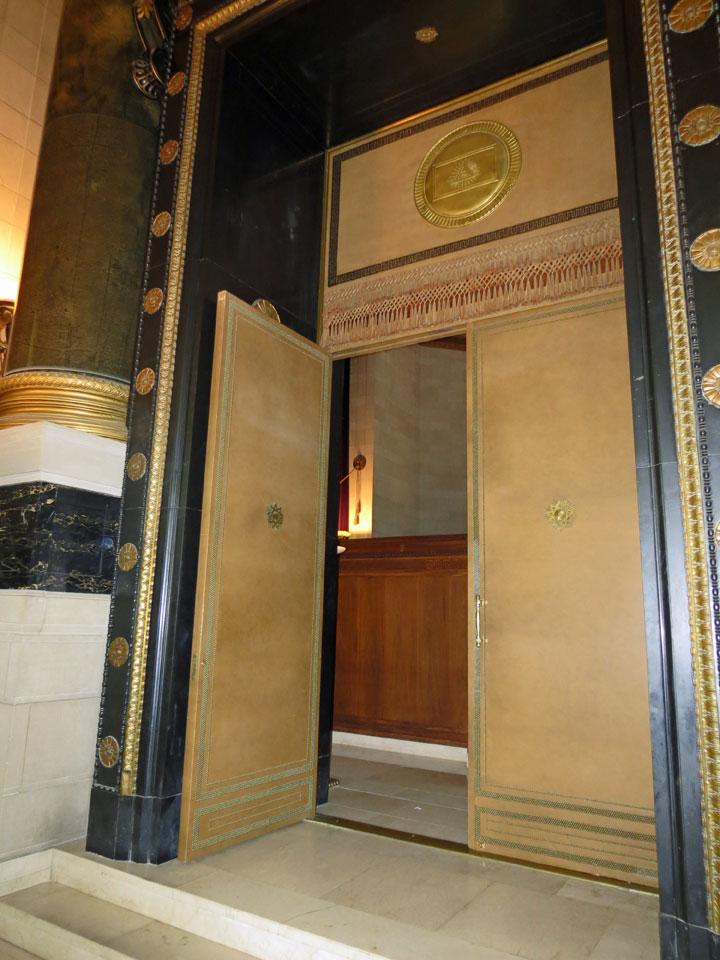
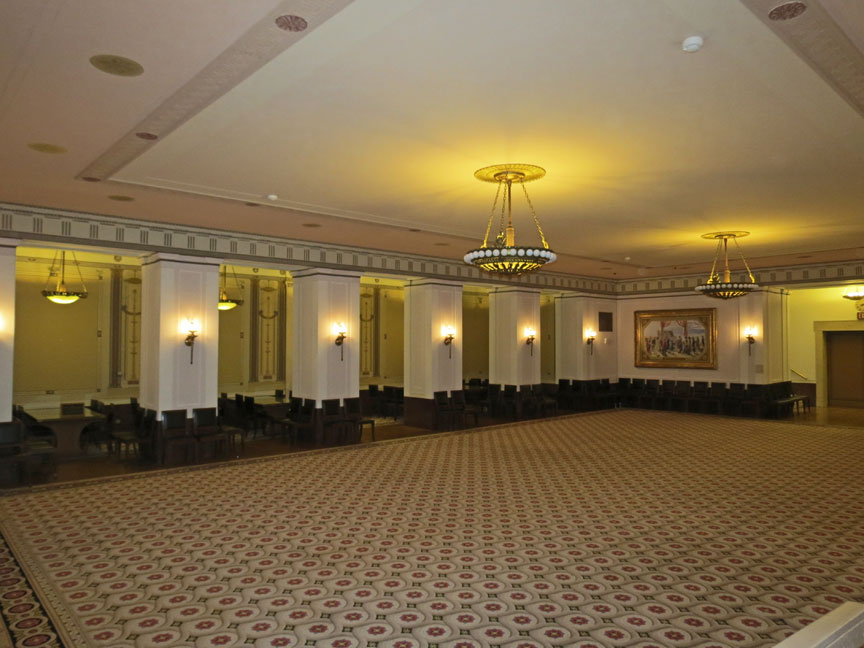
Some of the Notable 33deg Masons
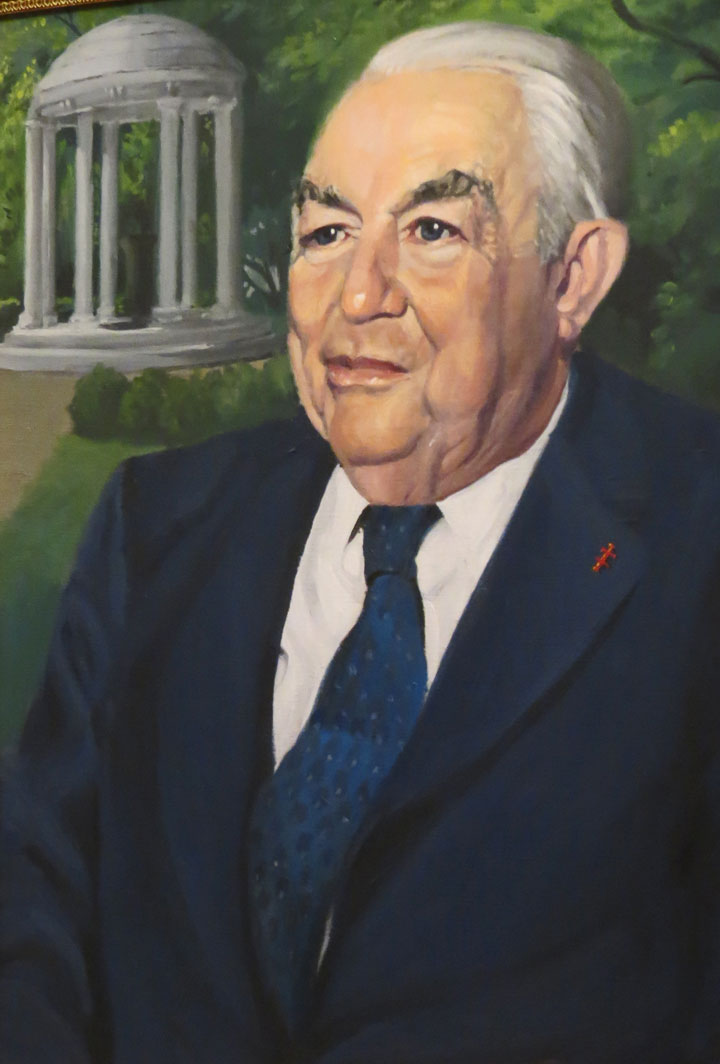
Sam Erwin
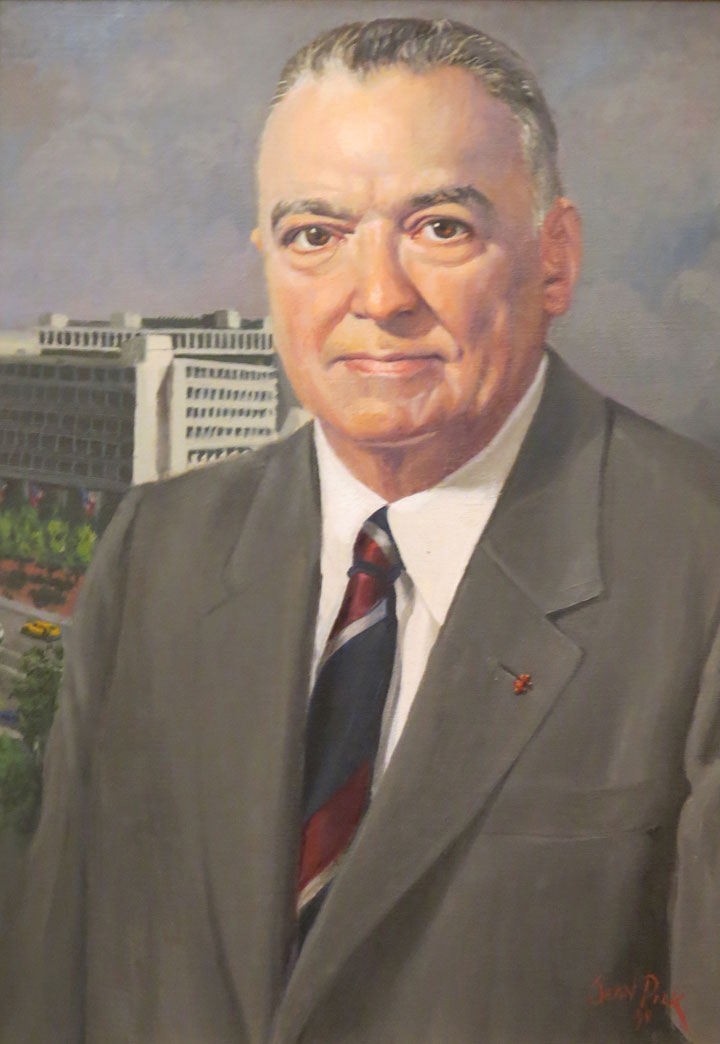
J. Edgar Hoover
